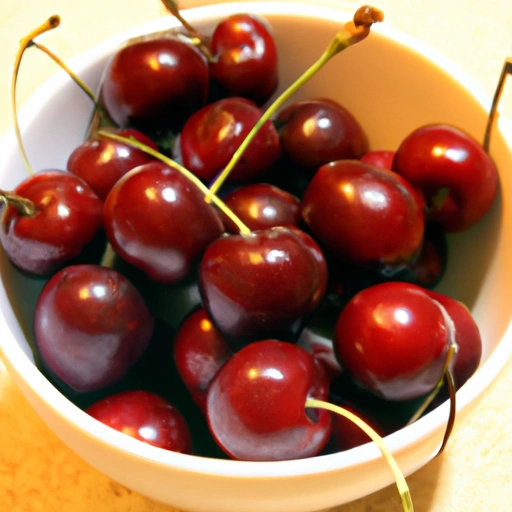Sweet Cherry
Description

Sweet cherry, known scientifically as Prunus avium, is a stone fruit that is appreciated for its vibrant color, juicy flesh, and delightful sweetness. Typically harvested in the late spring through summer, this fruit is a favorite ingredient in various cuisines, offering a burst of flavor and a touch of natural sweetness to both sweet and savory dishes. With a rounded heart-like shape and a smooth exterior, sweet cherries range in color from bright red to deep burgundy.
Common uses
Sweet cherries are often enjoyed fresh as a snack, but they also make a delightful addition to salads, desserts, jams, and sauces. When preserved, they can be savored year-round in canned or frozen form. Cherries are also processed into juices and used as natural flavorings in a range of culinary products.
Nutritional value
Calories
A cup of fresh sweet cherries weighing approximately 154 grams (5.4 ounces) contains about 97 calories (406 kilojoules).
Protein
That same cup of sweet cherries provides about 2 grams (0.07 ounces) of protein.
Fat
Sweet cherries are low in fat, with less than 0.5 grams (0.02 ounces) per cup.
Carbohydrates
Carbohydrates are the primary macronutrient in sweet cherries, with about 25 grams (0.88 ounces) per cup, of which 20 grams (0.71 ounces) are natural sugars.
Vitamins
Sweet cherries are an excellent source of vitamin C, with a cup offering about 10.8 milligrams (0.00038 ounces), which is roughly 12% of the recommended daily intake. They also contain small amounts of vitamins A and K.
Minerals
They provide essential minerals such as potassium, with around 342 milligrams (0.012 ounces) per cup, and also have traces of calcium, magnesium, and phosphorus.
Health benefits
Rich in antioxidants, sweet cherries have anti-inflammatory properties and may contribute to heart health, reduced muscle soreness, improved sleep quality due to their natural melatonin content, and potentially play a role in cancer prevention. Their dietary fiber supports digestive health, while the vitamins and minerals they contain contribute to overall well-being.
Potential risks
Consuming sweet cherries in moderation poses little risk; however, overconsumption can lead to gastrointestinal discomfort due to their high fiber and sugar content. Individuals with certain allergies or those on medication should consult a healthcare provider before incorporating significant amounts of cherries into their diet.
Common recipes
Sweet cherries are a staple in fruit salads, pies, tarts, and clafoutis. They're also popular in homemade ice creams, sorbets, and as toppings for yogurt and cereal.
Cooking methods
Cherries can be eaten raw or cooked. Cooking methods include baking, poaching, and simmering. They can also be dried or reduced into syrups and sauces.
Pairing with other ingredients
Their sweet flavor pairs well with almonds, chocolate, vanilla, and various spices like cinnamon and nutmeg. In savory dishes, cherries complement meats like pork and duck, and cheeses such as goat cheese and brie.
Summary
Sweet cherries are a delicious and nutritious ingredient that add color, flavor, and a myriad of health benefits to a wide array of dishes. Whether eaten fresh or incorporated into recipes, they are a versatile fruit that can be enjoyed worldwide.